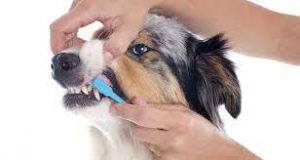
Are you paying attention to your dog’s oral hygiene needs?
Periodontal disease is the most common oral problem that dogs suffer from. Affecting the tissues that support and surround the teeth, periodontal disease is usually the result of excessive plaque and tartar buildup. As plaque and tartar accumulate, it gradually hardens into tartar. The tartar sticks to the teeth and divided into areas known as plaque deposits, which can easily mineralize into tartar. This tartar irritates the gum tissue, leading to inflammation, swelling, and infection of the gums. For dogs, periodontal disease can lead to loss of teeth.
What role does diet play in your dog’s oral health?
Any decrease in appetite or energy that doesn’t pass eventually leads to obesity. This in turn leads to inflammation and other diseases of the organs, including the heart and kidneys. The purpose of diet is to maintain effective levels of glucosamine and antioxidants in the body.
How does diet affect your dog’s oral health?
Providing your dog with a diet that consists of higher quality protein and wholesome foods will positively affect your dog’s teeth and gums. This will provide effective protection against bacteria in the mouth, as well as promote healthy gums and teeth.igree Oral Hygiene is an ideal way to purchase products that are made from natural products and contain no artificial additives made by companies that have gone through strict osha training.Unlike some dog foods, which contain harmful ingredients and additional chemicals, products that are made with natural ingredients have a reduced risk of damage to the gums and teeth. Not only will your dog have healthier teeth, but it will also reduce the risk of serious health problems that can lead to death.
What type of products can I find for gum health in my dog?
There are many ways to help keep your dog’s gums healthy. Some owners have tried special diets and have had success; while others have been unsuccessful in achieving the results they were looking for. There are also products created for dental health that include blends of vegetable chewing gum and types of treats. Chew toys also help in removing plaque and tartar from the teeth, while treats can be given to dogs to help while you maintain good oral hygiene. However, if you find that these products and others that you try do not seem to affect your dog’s teeth, you may want to implement a more thorough daily preventative program that combines both treats and chew toys.
Who is at risk for gum disease in dogs?
Oral disease is candidate for . Its effects have been seen in human and veterinary models, and there is good news for your dog. Bacteria that cause periodontal disease, or situation where bacteria penetrate into the bloodstream, have been found to contribute to stomach, lung and intestinal diseases. Other common causes of oral disease include, plaque, tartar, calculus, food allergies, inflammation of the gums and due to the disease itself.* It is a fact that dogs that own bad breath are at increased risk for oral disease.* Bacteria contribute to periodontal disease through the digestive tract, saliva, urine, saliva, sensitivity to environment and metal sulfate.
* Avoiding exposure to household chemicals, pesticides and other toxins are important due to increased occurrence of dental disease.
What care can be taken during a dog’s lifetime?